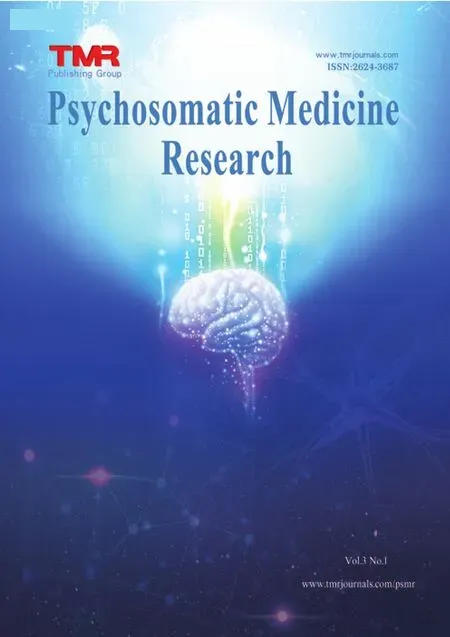Comparison of Mental Health Status and Behaviour of Chinese Medical and Non-Medical College Students During the Coronavirus Disease 2019(Covid-19)Pandemic
2021-10-20JingHuiChangDongHanDongWang
Jing-Hui Chang,Dong Han,Dong Wang
1School of Public Health,Southern Medical University of China,Guangzhou,China.2School of Health Management,Southern Medical University of China,Guangzhou,China.
#Jing-Hui Chang and Dong Han contributed equally to this work and shared the first authorship.
Abstract Objectives:The study aimed to compare knowledge,attitude and behaviour regarding COVID-19,and mental health status between medical (MCS) and non-medical college students (NCS) during the early stage of the COVID-19 outbreak in China.Methods:The self-compiled general questionnaire,Generalized Anxiety Disorder Scale and Patient Health Questionnaire 9 were used to survey 6297 college students on the Internet.Results:A total of 6296 valid questionnaires were collected,with an effective rate of 90.34%.Among them,5445 are medical college students(MCS)and 851 are non-medical college students(NCS).The average age is(20.169±2.270) years old and boys account for 33.76%.The comparison found that medical students have a more comprehensive understanding of COVID-19,with an average score of (7.867±0.850).The average number of behaviors changed by MCS (5.439±1.145) was higher compared with NCS (5.313±1.284).NCS had a higher prevalence of anxiety (31.26%;n=266; P=0.015) and depressive symptoms (25.26%;n=215; P=0.025) than MCS.Conclusion:During future COVID-19 outbreaks,accurate mental health education should be provided for both medical and non-medical students.Thus,the data from this study will inform future health promotion and psychological interventions.
Keywords:Anxiety,Depression,Behaviour,COVID-19,Medical college students,Propensity score matching
Introduction
In December 2019,a new type of coronavirus pneumonia broke out in Wuhan City,Hubei Province,China.According to the World Health Organization,as of May 25,2021,the new coronavirus has rapidly spread to 230 countries around the world[1,2].This is the third serious coronavirus outbreak in less than 20 years,following SARS in 2002-2003 and MERS in 2012 [3].On 30 January 2020,the WHO Emergency Committee declared a global health emergency based on growing case notification rates at Chinese and international locations[4].
Symptoms of infection include fever,chills,cough,coryza,sore throat,breathing difficulty,myalgia,nausea,vomiting and diarrhoea [5].Severe cases can lead to cardiac injury,respiratory failure,acute respiratory distress syndrome and death [6].Given the scale and rapid spread of COVID-19,the Chinese government implemented strict self- and forced-quarantine measures across the country,which may continue indefinitely [7].Besides its medical consequences,including the risk of death,COVID-19 is also having significant sociological,psychological and economic effects globally.When facing the extraordinary situation of this public health emergency,individuals are prone to various psychological and mental health problems[7].
To prevent the spread of the COVID-19 epidemic to campuses,the Chinese Ministry of Education has instructed that all educational institutions remain closed until further notice.Previous research has revealed that closure of schools and business can lead to negative emotions among individuals [8].During the SARS outbreak,numerous studies investigated the psychological impact in the non-infected community,revealing significant psychiatric morbidities which were found to be associated with younger age and increased self-blame [9].Therefore,it is important to pay attention to the mental health status of college students.
Medical college students (MCS) are perceived to experience greater stress and higher physical and emotional demands than other students.In fact,different studies across the globe have demonstrated that MCS have higher rates of depressive and anxiety symptoms when compared with the general population within the same age range [10-15].However,when facing this global health emergency,the question arises of whether MCS experience more psychological distress than non-medical college students (NCS) and whether their knowledge,attitude and behaviour regarding COVID-19 are different.
To date,current research on COVID-19 has focused on epidemiological and clinical research with patients[1,3,5,6],while there are no studies comparing MCS and NCS in China in terms of knowledge,attitude and behaviour towards COVID-19,as well as anxious and depressive symptoms.
This study involved a cross-sectional survey with college students within the first two weeks of the COVID-19 outbreak in China to compare the knowledge,attitude and behaviour towards COVID-19,as well as anxious and depressive symptoms between Chinese MCS and NCS.The aim was to provide accurate decision-making references for relevant government departments and universities regarding health promotion and psychological interventions.
Methods
Participants and data collection
According to the formulaN=Zα/22×p(1-p)/d2×deff,the allowable error(d)is 2%,the design effect(deff)is 2.5,Zα/2=1.96,the maximum degree of variation(p)is 50%,and the sample size is 6003.Considering the response rate and sampling error,the sample size is increased by 10%,and the required sample size is at least 6603.From 31 January to 3 February 2020,an internet-based questionnaire survey was used was used to conduct a cluster random sampling survey of college students at a certain medical university in Guangzhou,including medical students with medical-related majors and non-medical students with other majors and the samples were representative.All interviewees participated voluntarily and signed an informed consent form.Quality control is carried out through the questionnaire settings such as logical error correction,limited filling range and the same IP address can only be answered once.The investigation was approved by the Ethics Committee of Southern Medical University(Grant No.2020 No.013).
Measures
Self-edited general survey questionnaire
Participants completed a questionnaire including general sociodemographic information such as age,gender,ethnicity,marital status,college major and health status.
Questionnaire on knowledge,attitude and behaviour regarding COVID-19
This self-developed questionnaire consists of 16 question in three sections:1) 10 questions on knowledge of COVID-19(e.g.symptoms,transmission channels,etc.);2) four questions on attitude towards COVID-19 information (e.g.false information,negative information about the COVID-19 outbreak,etc.);and 3) two questions on protective behaviours such as wearing masks,washing hands and reducing interpersonal contact (i.e.measures taken to prevent infection and health behaviours to be changed in the future).The Cronbach' s alpha coefficient for the internal consistency reliability of the questionnaire was 0.83.
Generalised Anxiety Disorder(GAD-7)Scale
The GAD-7 is a brief self-report scale to assess the symptoms of generalised anxiety disorder [16].The GAD-7 is increasingly used as a measure of anxiety and has shown adequate reliability and validity in previous studies [17,18].The seven items assess the frequency of symptoms of anxiety on a 4-point Likert-scale ranging from 0 (not at all) to 3 (nearly every day).The total score (range:0–21) is obtained by summing across all item scores;ordinary mean substitution is used for missing items,provided less than one third (less than two items) are missing.The total score is categorised as follows:minimal (0-4),mild (5-9),moderate (10-14) and severe (15-21)anxiety symptoms [16].Cronbach’s alpha for the scale was 0.899 in this study.
Nine-Item Patient Health Questionnaire(PHQ-9)
The 9-item Patient Health Questionnaire (PHQ-9) has been recommended for research and clinical evaluation by the American Psychiatric Association [19].It measures the frequency of symptoms of depression with nine items rated on a 4-point Likert-scale ranging from 0 (not at all) to 3 (nearly every day).The total score,ranging from 0 to 27,is obtained by summing all item scores;ordinary mean substitution is used for missing items if less than one third (less than three items) are missing [20].The scale is extremely sensitive to depressive symptoms [21].Based on the total PHQ-9 score,depression severity is categorised into minimal (0-4),mild (5-9),moderate (10-14),moderately severe (15-19),and severe (20-27) [21].Cronbach’s alpha for the scale was 0.891 in this study.
Statistical analyses
Individuals in the MCS group were matched with individuals in the NCS group using 2:1 nearest neighbour matching with a calliper size of 0 [22].Standardised mean differences were estimated for all baseline covariates before and after matching to assess pre-match imbalance and post-match balance.The matching variables were gender,marriage,income,grade,location,household registration,smoking and drinking.Basic information and chosen response items were expressed as number of cases (percentage).The comparison of categorical data between MCS and NCS was conducted using the χ2test.If the conditions for the χ2test were not met,the Yates test or Fisher’s exact test were used accordingly.Thettest ort’ test was employed for the comparison of continuous data between groups.GAD-7 and PHQ-9 scores were compared between groups using the Wilcox rank-sum test.All tests were two-sided and P-values under 0.05 were considered statistically significant.All analyses were conducted using R software version 3.5.3 with the MatchIt and stats Package[23].
Results
Demographic characteristics
In total,6970 college students aged over 18 years completed the survey,the survey’s response rate is 87%.Among them,6297 valid questionnaires were included in the analysis,as 673 invalid questionnaires were excluded because of incomplete data(completion rate=90.34%).Age,income,grade,study place and drinking were balanced (P>0.05) and all the average standardised mean differences decreased after matching.Sociodemographic characteristics are presented in Table 1.
Knowledge of COVID-19
Comparing MCS and NCS,the former had more comprehensive knowledge of COVID-19,as the mean number of correct answers of the MCS group was 7.867 ± 0.850,while the NCS group had a mean of 7.744±0.998 correct answers(P<0.05).
Furthermore,99.82% (n=1699) of MCS correctly stated that no drugs can prevent the COVID-19 infection,while 98.82% (n=841) of NCS correctly answered this question.MCS also had better knowledge about what to do if one suspected that one was infected with COVID-19 (P<0.05).Interestingly,both MCS and NCS had insufficient knowledge of the symptoms of COVID-19.Knowledge about COVID-19 is detailed in Table 2.
Attitude towards information on COVID-19
Table 3 indicates that the usual channels used by college students to learn about COVID-19 differed between the groups (P<0.05):53.47% (n=455) of NCS selected social platforms (Weibo,Twitter,etc.),while MCS preferred social software (Wechat,WhatsApp,etc.).Among other media,magazines appeared to be the least favoured option for obtaining knowledge.
The rate of students following the news on COVID-19 with a frequency of ‘sometimes’or ‘often’was similar in the two groups.A total of 31.61% of NCS and 26.2% of MCS believed that ‘most’ and 39.95% of NCS and 42.48% of MCS believed that‘half’ of the information obtained daily related to the COVID-19 epidemic was negative information during the outbreak (P<0.05).Moreover,similar proportions of students in both groups (50.53% of NCS and 50.18% of MCS) thought that only a small part of the information related to the COVID-19 epidemic-related information they received was false (rumours,out-of-context,distorted information,etc.).All in all,MCS were less likely to perceive that the information they received on COVID-19 was negative.
Behaviours regarding COVID-19
We analysed the respective proportions of respondents who took various measures to prevent infection (i.e.transmitting and contracting COVID-19) targeting the main modes of transmission (person-to-person droplet spread).There were small but significant differences between MCS and NCS regarding reducing the frequency of going out(98.41%vs.97.18%,P<0.05)and cancelling plane or train tickets (45.59% vs.50.06%,P<0.05) (Table 4).Precautionary measures like using masks,washing hands frequently and avoiding contact with or purchasing or consuming wild animals did not differ significantly between the two groups.Regarding health behaviours to be changed in the future,there were small but significant differences between MCS and NCS in terms of their future intention to engage in wearing a mask when having cold symptoms (86.72%vs.83.20%,P<0.05),having a balanced diet (90.01% vs.86.25%,P<0.05),and covering the mouth and nose while coughing or sneezing (90.07% vs.86.72%,P<0.05).Moreover,the average number of behaviours changed by MCS(5.439±1.145)was higher than those changed by NCS(5.313±1.284).
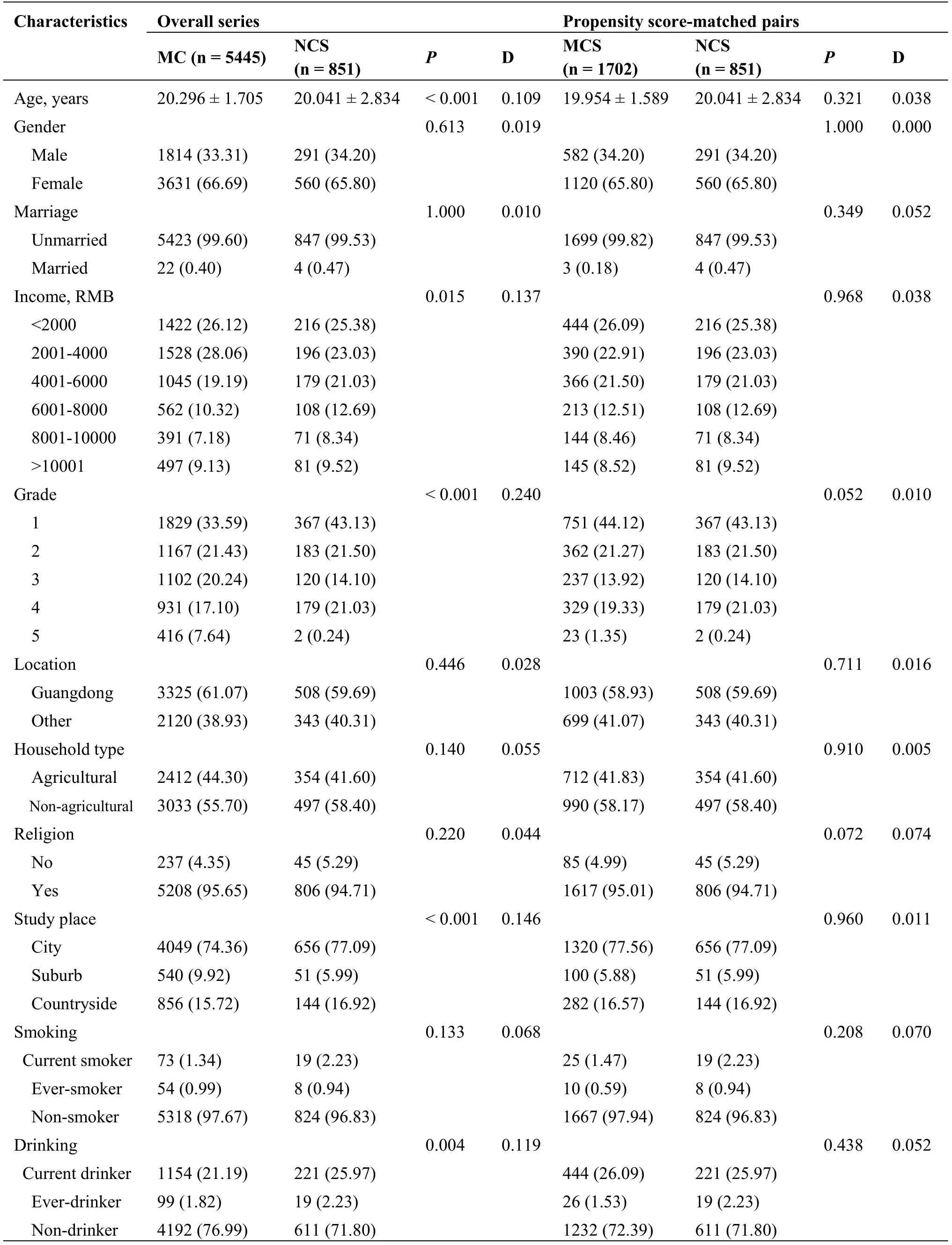
Table 1 Demographic characteristics of college students
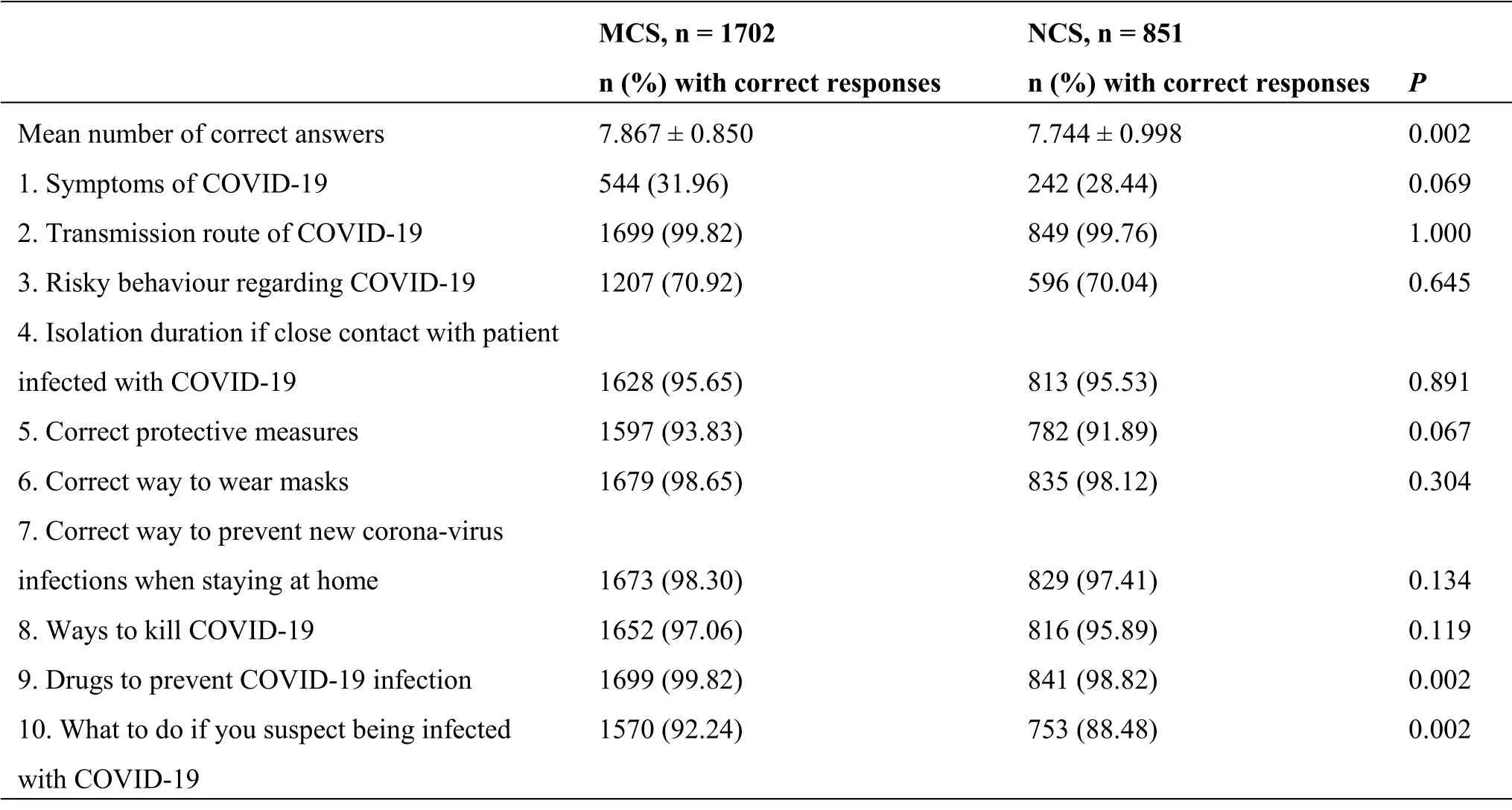
Table 2 Knowledge of COVID-19 among college students

Table 3 Attitude of college students towards information received on COVID-19
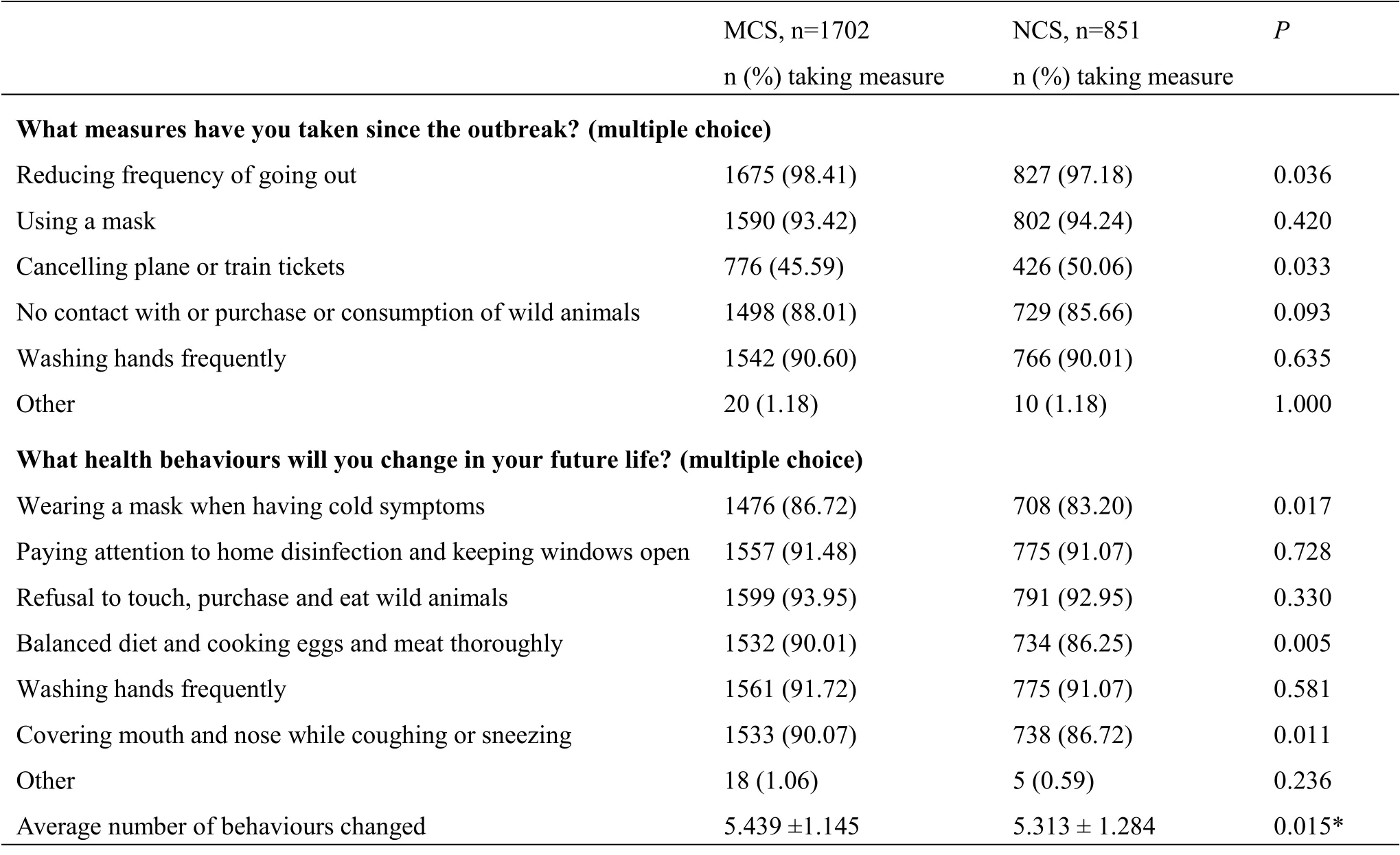
Table 4 Analysis of college students’behaviours regarding COVID-19
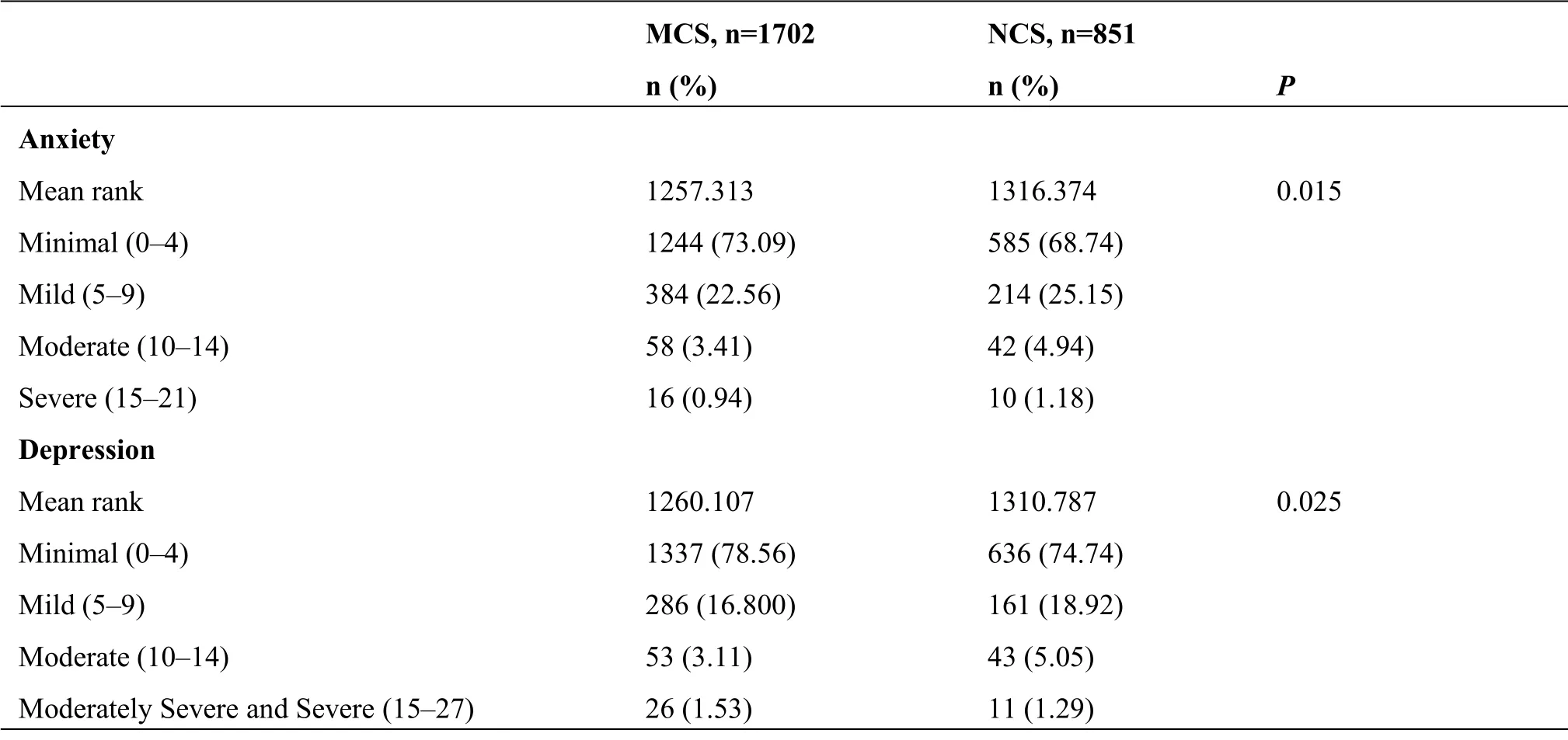
Table 5 Prevalence of different anxiety and depression severity levels among college students
Comparison of anxiety and depression between MCS and NCS
The median scores (quartiles) for anxiety and depression among MCS were 2.00 (0.00,5.00) and 1.00 (0.000,4.00),respectively;the corresponding scores for NCS were 3.00(1.00,6.00)and 1.00(0.00,5.00).NCS had a prevalence of 31.27% (n=266) for anxiety symptoms and 25.26% (n=215) for depressive symptoms.MCS had a prevalence of 26.91%(n=458)for anxiety symptoms and 21.44%(n=365) for depressive symptoms.NCS were more likely to have higher anxiety (P=0.015) and depressive symptoms (P=0.025) compared with MCS.
Discussion
Public health emergencies are characterised by suddenness,high uncertainty,urgency,social publicity[24].The costs of the epidemic are not limited to medical aspects,but also lead to significant sociological,psychological and economic effects globally.A study targeting the general Chinese population reported that more than half of respondents rated the psychological impact as moderate-to-severe,and about one-third reported moderate-to-severe anxiety in the early phase of the COVID-19 outbreak[25].The present study found that Chinese college students showed lower levels of anxiety and depression than NCS.Moreover,the MCS group had better knowledge of COVID-19,a more positive attitude towards related information and practised more protective measures than did NCS.
Increasingly more researchers have called attention to the mental health needs of international and Chinese students [26-28].As the epidemic is ongoing,it is important to prepare health care systems and the general public so they are medically and psychologically ready for widespread transmission outside China [29].Our findings provide suggestions for policy and psychological interventions targeting college students.
First,improving NCS’ awareness,attitude and health behaviours regarding COVID-19 may be beneficial to their mental health.The internet was the primary health information channel for college students.Therefore,since MCS have more comprehensive medical expertise than NCS,to address knowledge gaps among NCS,universities should launch education programs on COVID-19 for students through new media such as social platforms and software.Mass media and governments must shoulder responsibility for health communication and provide more accurate and professional health knowledge on COVID-19,reducing the impact of rumours [30].Positive health behaviours have a positive impact on mental health [31].Raising health awareness will promote the implementation of health behaviours,thereby improving the mental health of NCS[32].
Second,mental health management centres at universities should implement online remote mental health counselling for college students in a timely manner,as students are spending most of their time at home during the epidemic.In addition,Mobile Health intervention was estimated to be superior to usual care in improving positive mental health among university students [33],and a protective effect of this intervention was also found for depressive and anxiety symptoms[34].Through online or mobile phone-based psychological interventions,psychological counsellors can implement extensive and in-depth mental health education.Although in this study,NCS showed a higher level of symptoms of anxiety and depression than did MCS,the incidence of depression among MCS was higher than that reported in a previous survey on mental health of Chinese college students(23.8%)[35].Therefore,the mental health of MCS still needs to be considered.
Finally,universities should promote effective online teaching and continuously monitor the physical and mental health of students.In addition to being most worried about their family members and themselves being infected with the new coronavirus,college students were found to be most worried about their academic studies being affected;therefore,during the epidemic,education authorities need to develop online portals and web-based applications to deliver lectures and other teaching activities [36].To provide more support for college students,online teaching platforms should offer free online courses.For students in remote areas who are unable to attend online lectures,the local education department should provide internet access.Regarding graduating college students who are facing pressure to find a job,it is recommended that school managers and employers provide online interviews.As high schools in a few provinces with a relatively low level of domestic transmission are reopening,health authorities are bracing themselves for another rise in COVID-19.For colleges and universities,the time for reopening is yet to be determined;thus,college teachers should maintain effective communication with students online and pay attention to their mental health while caring about their learning.
Limitations and strengths
The strength of our study is its cross-sectional design.However,this study has several limitations.First,due to the impact of the epidemic,random sampling surveys cannot be conducted at the scene.The snowball sampling strategy may lead to biased selection,and the study population was not representative of college students.Second,the knowledge,attitude and behaviour regarding COVID-19 and mental health status of college students are continuously changing;thus,it was difficult to establish long-term causal relationships between college students’ metal health status and their behaviour.In the future,a longitudinal study design is needed to further investigate and clarify causal links.Third,anxiety and depression were assessed via a self-reported survey;this may involve information bias despite this being a commonly used method in epidemiological research because of feasibility considerations.Lastly,almost 60% of the sample was recruited from Guangdong in China;thus,caution is needed when generalizing these findings to other areas in mainland China.
Conclusions
In summary,we found differences between MCS and NCS in terms of knowledge,attitude and behaviour regarding COVID-19 and mental health status.These results suggest that psychological interventions in the university environment should consider differences according to course of study and should simultaneously focus on multiple mental health-related factors rather than any single aspect.
杂志排行
Psychosomatic Medicine Resesrch的其它文章
- Is It the Obligation of People with Hiv/Aids to Inform Spouses and Sexual Partners
- Going-out Behaviors of Patients with Chronic Diseases When Purchasing Drugs During Covid-19
- Path Analysis of the Impact of Covid-19-Related Stress Response on Phobia and Anxiety Experienced by College Students
- Impact of Risk Perception about COVID-19 on the Coping Behavior of the Elderly:Mediating Role of Self-Efficacy
- The Effect of Carbohydrate Drinks Before Painless Colonoscopy on Hemodynamic Stability and Comfort of Elderly Patients:A Randomized Controlled Study
